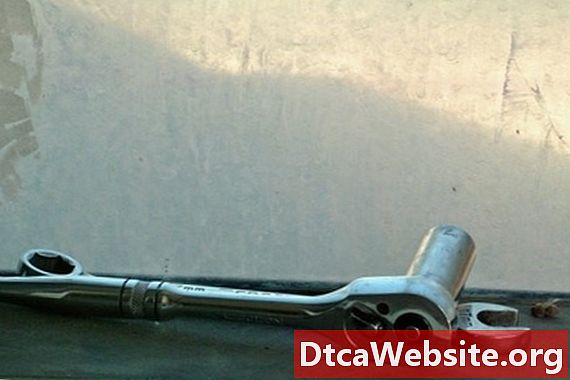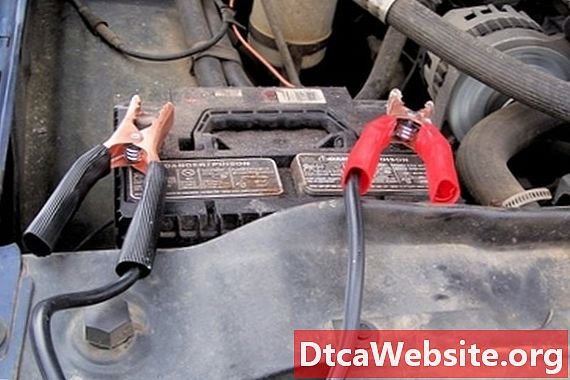
Contenu

The clutch slave cylinder, also called the clutch master cylinder, on the F-150 truck has a very special purpose. The clutch slave cylinder, filled with hydraulic fluid, assists in increasing the pressure exerted on the clutch fork and throwout bearing during shifting. Upon the application of the clutch pedal, fluid in the clutch lines becomes pressurized inside the slave cylinder valve body, pushing the fork against the pressure plate, which releases it from the clutch. The hydraulic lines that connect to the slave cylinder on an F-150 have a very special quick release design, requiring the use of a Ford Motorcraft tool.
Step 1
Park the vehicle on a level surface and place the selector in neutral, for your manual transmission. Apply the emergency brake. Raise the hood. Use a floor jack to lift up the rear of the vehicle and place two jack stands under the frame near each wheel. Lift the front of the vehicle and place two jack stands under the frame near each wheel. Place a shop light underneath the vehicle near the transmission bell housing.
Step 2
Use a socket and wrench to loosen and remove the bolts to the transmission skid plate, if you have one on your vehicle. If an exhaust pipe impedes removal of the skid plate, use a socket to loosen the exhaust pipe hanger bracket and push the pipe aside as you lower the skid plate. Locate the clutch slave cylinder hydraulic hose that enters the side of the transmission housing.
Step 3
Refer to your owners repair manual if you can not identify the hose. It will be a black, reinforced hose with a coupler on it that seats into the bell housing. Wipe off the hose with a rag and spray penetrating oil on the coupler joint. Let it soak. Follow the black hose to its first hanger bracket. Use a socket to loosen the hanger bolt, so the hose has slack.
Step 4
Take the fork end of your Ford quick release disconnect tool and place in in the seam between the coupler sleeve and the end of the coupler. Pry the tool back away from the transmission, which will compress the sleeve. Keep it compressed while you push in on the hose with other hand, then quickly pull. The coupler will disconnect. Plug the end of the hose line with a rubber stopper.
Use a screwdriver along with the quick release tool, if you have an older style F-150 engine. Place the tool in the sleeve seam and pull back to compress the white ring into the joint. Remove the disconnect tool and take the flat part of a slot-head screwdriver to push the white ring into the coupler joint. Push the white ring in on all sides until it seats internally. Pull the hose loose. Plug the end of the hose with a rubber stopper.
Items you will need
- Owners repair manual
- Floor jack
- Jack stands
- Shop light
- Socket set
- Ratchet wrench
- Rags
- Penetrating oil
- Quick release tool (Ford Motorcraft # 303-755)
- Rubber plug


